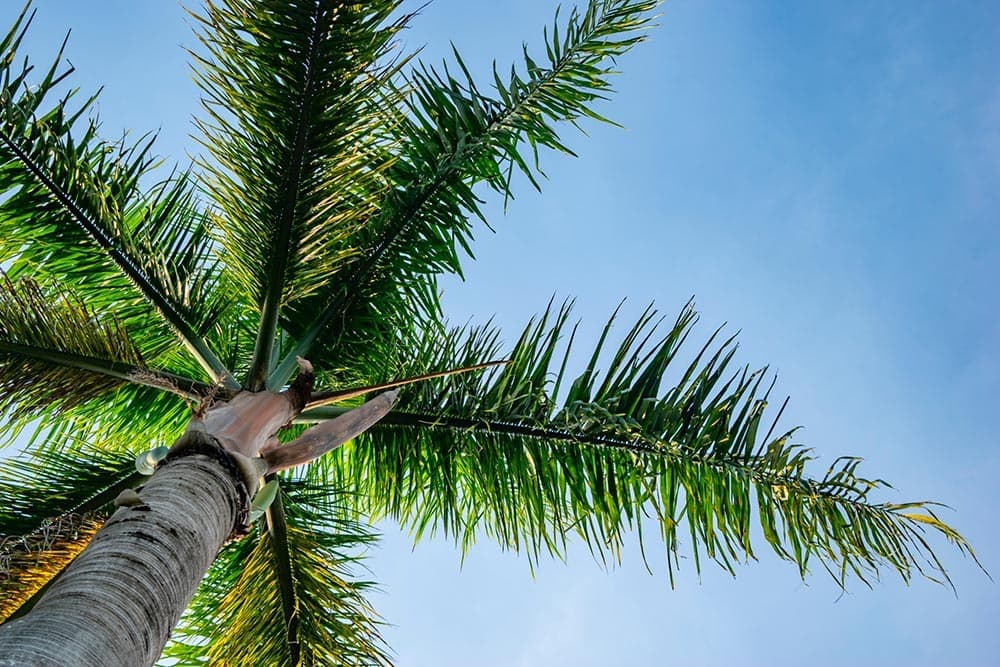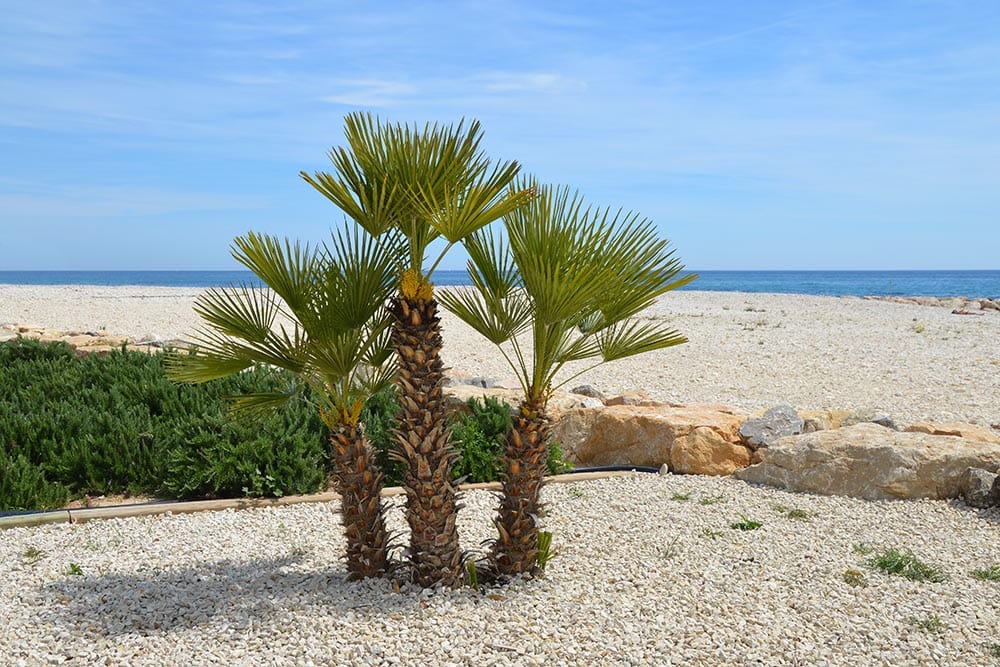How Fast Do Palm Trees Grow? 8 Different Types
-
Pete Ortiz
- Last updated:

When you think of a palm tree, you are transported to a tropical place where the magnificent trees stand tall, providing a shady umbrella with their large fan-like leaves. If you are thinking of adding one to your garden, you may wonder how long they take to grow to its spectacular height.
The growth rate of a palm tree will depend on the type of palm you choose to grow, the temperature, irrigation, fertilizer, and climate. Typically, palms are known to grow fast, but the growth rate is diverse with such a variety of palm trees. Depending on the type of palm tree, they can grow from an average of 3 inches to 8 feet a year.
In this article, we will look at the growth rate of different palm trees and some tips to help your palm tree grow faster.
The 8 Different Palm Trees & Their Growth Rates
1. King Palm

King Palms have a fast growth rate. They thrive in soil rich in nutrients and moisture and will grow up to 2 feet per year. When they have reached maturity, they can reach up to 49 feet in height. The sun helps these palms grow faster, so they should ideally be planted in areas with little shade. During the winter, you should expect a decrease in the usual growth rate.
2. Queen Palm
Queen Palms, like the king palms, grow about 2 feet per year in the right conditions. For perspective, a 5-gallon queen palm could reach 25 feet in 10 years. It thrives best in hardiness zones 9-11 and thrives on conditions much like a king palm.
3. Lady Palm
The lady palm is a rare species that takes some time to grow. They generally grow between 2–10 inches per year outdoors in a suitable climate. They are usually well-liked indoor plants but will take even longer to develop.
4. Foxtail Palm

Foxtail palms are fast-growing palm trees with a growth rate of 2 to 3 feet a year and can reach up to 32 feet high. These palms have deep root systems, can tolerate drought conditions, and are prevalent in the warmer parts of the U.S. They are also great indoor plants but will stop growing at about half their height.
5. Carpentaria Palm
The Carpentaria is one of the most robust species, and because it is native to rainforests, it proliferates. It is one of the fastest growing palms, growing about 6 feet per year and reaching over 100 feet in height! They do not tolerate cold too well, and the growth rate will stagnate if exposed to extreme cold.
6. European Palm
The European palm isn’t one of the fastest growing, but it can occasionally withstand various conditions such as cold winters and frost. It is a hardy shrub reaching up to 16 feet and a popular garden choice. Young Europeans’ palms can grow about 10 inches a year, but the growth rate slows down as it matures.
7. Windmill Palm

The Windmill palm is a hardy species that grows up to 8 inches yearly. They grow great indoors but do not enjoy the cold weather. They will grow exceptionally slowly in frigid climates.
8. Mexican Fan Palm
In the right conditions, the Mexican Fan palm is one of the fastest growing palms reaching up to 100 feet. It grows 4 feet a year but may be slower outside Mexico or California.
Choosing the Right Palm

Palm trees thrive in warm, tropical climates. However, you can still enjoy palm trees if you do not live in an area where these conditions exist all year round. They should thrive as long as your palm has the ideal growing conditions and care. Palm trees have so many varieties that there is an ideal one for everyone.
Before you go out and buy a palm tree, do a little research. Plan where you want your tree to grow and how much space it will need to thrive, and ensure you have suitable fertilizers, soil, and enough irrigation.
If you don’t have room for a tall palm, there are several options for shorter palms that can grow indoors or on patios. There are also a variety of taller palms, which will require patience to reach their full spectacular height.
Tips to Increase the Growth Rate of a Palm Tree
If you give your palm trees the proper care, they can thrive happily, and to help them grow faster, the following tips can help:
- Planting Area: Your palm should be planted in an area with full to partial sun and good drainage.
- Spread out the roots: Cut through any roots that grow in a circle to allow them to grow outwards quickly and become well-established in the soil sooner, encouraging new growth.
- Keep it warm; When palms grow in conditions replicating their tropical environment, they usually reach their full growth potential. Your plant will thrive outdoors if you live in a warm location. Extra lights indoors can also provide extra warmth.
- Irrigation: Although palms can handle drought conditions, slow, deep watering will help them grow faster. During the summer, check the soil moisture once a week and water it whenever it is dry. Water your palm in the morning before the afternoon heat, so the water does not evaporate.
- Nourish your palm: Follow the package directions to measure the correct amount of palm tree food for the size of your tree; some products determine the amount based on the tree height, while others are based on the trunk size. Adding potassium sulfate to your palm’s potting soil and fertilizing it regularly will help it grow faster.
- Maintenance: Cut back any dead or browning fronds and try to cut them as close to the trunk as possible.

Conclusion
Palm trees have one of the widest ranges of growth speeds, and with so many varieties, the growth rate will depend entirely on which palm tree you choose to plant. The growth rates can vary between 3 inches and 8 feet a year and depend on their growing conditions, environment, climate, and care.
There are shorter varieties that make great indoor plants and taller palms to tower over the garden. When choosing a palm tree, you will need to consider your use for it and determine which growth rate will be ideal for you.
Featured Image Credit: thsulemani, Shutterstock
Contents




